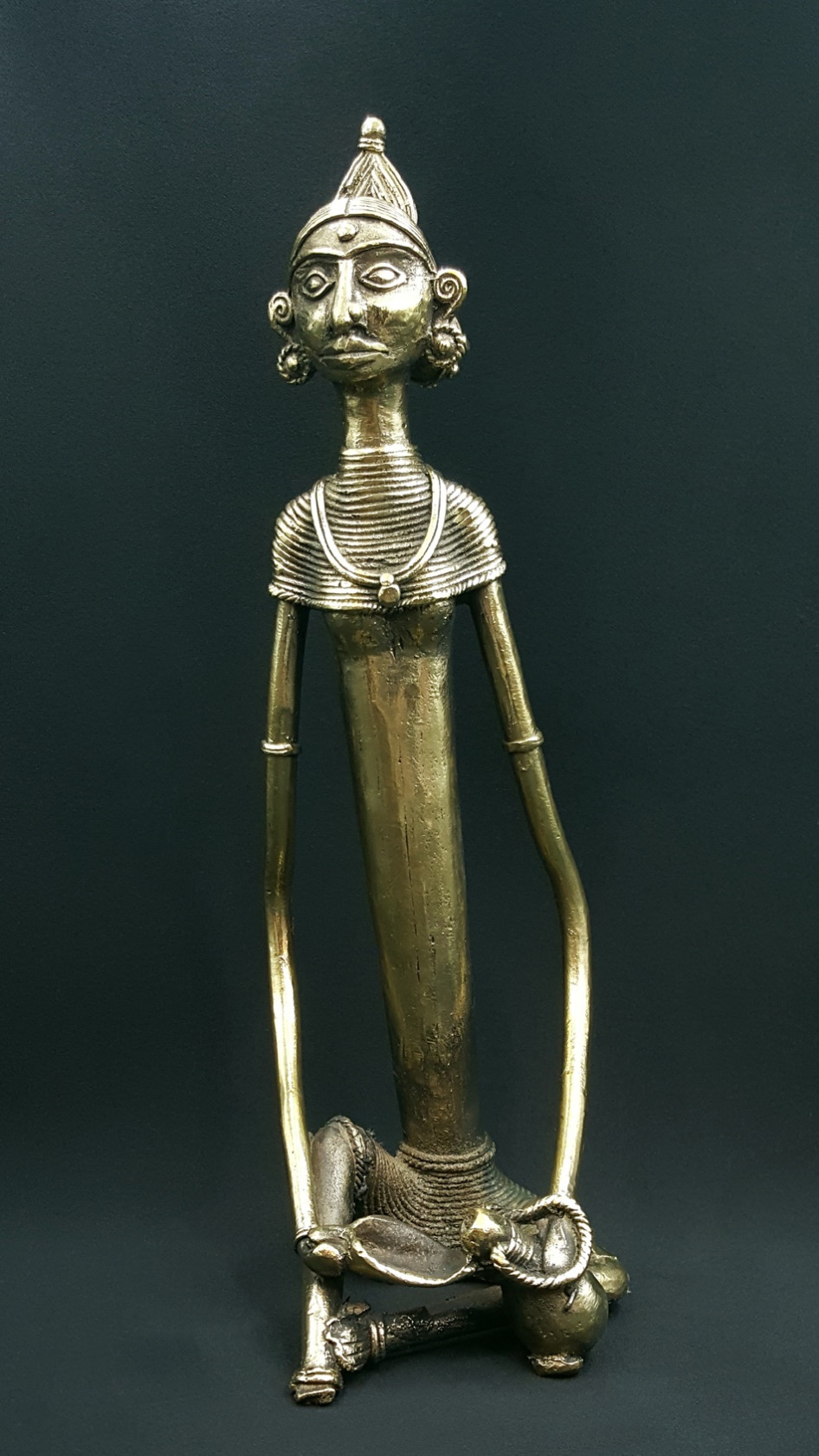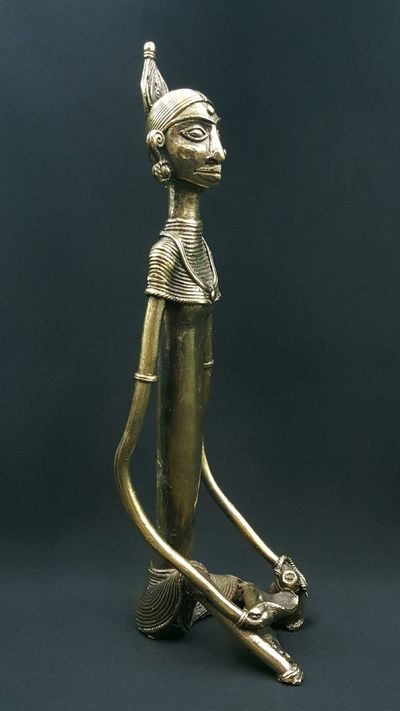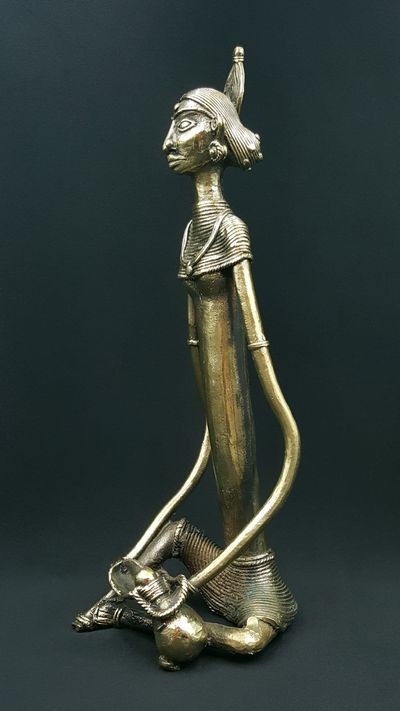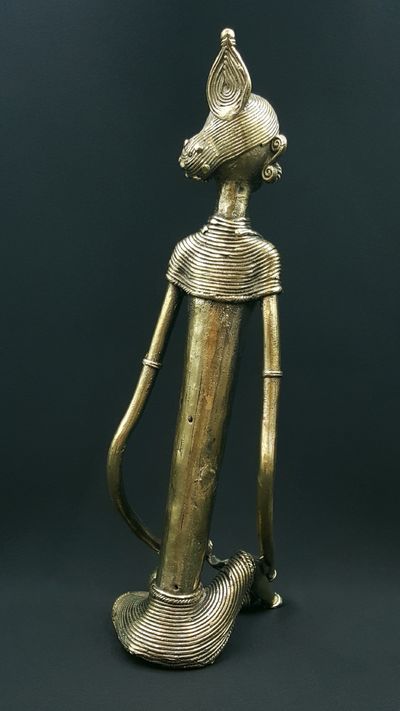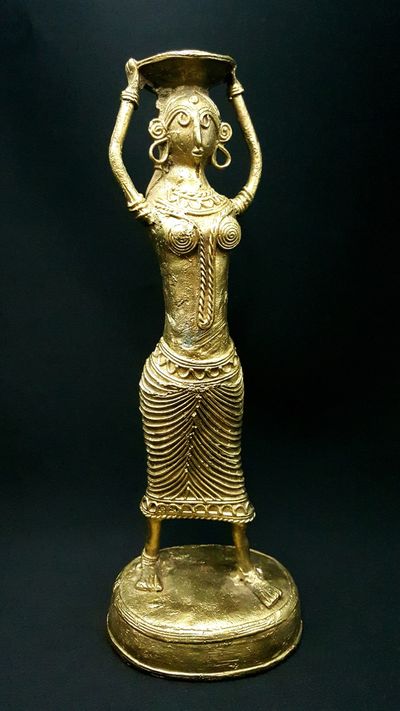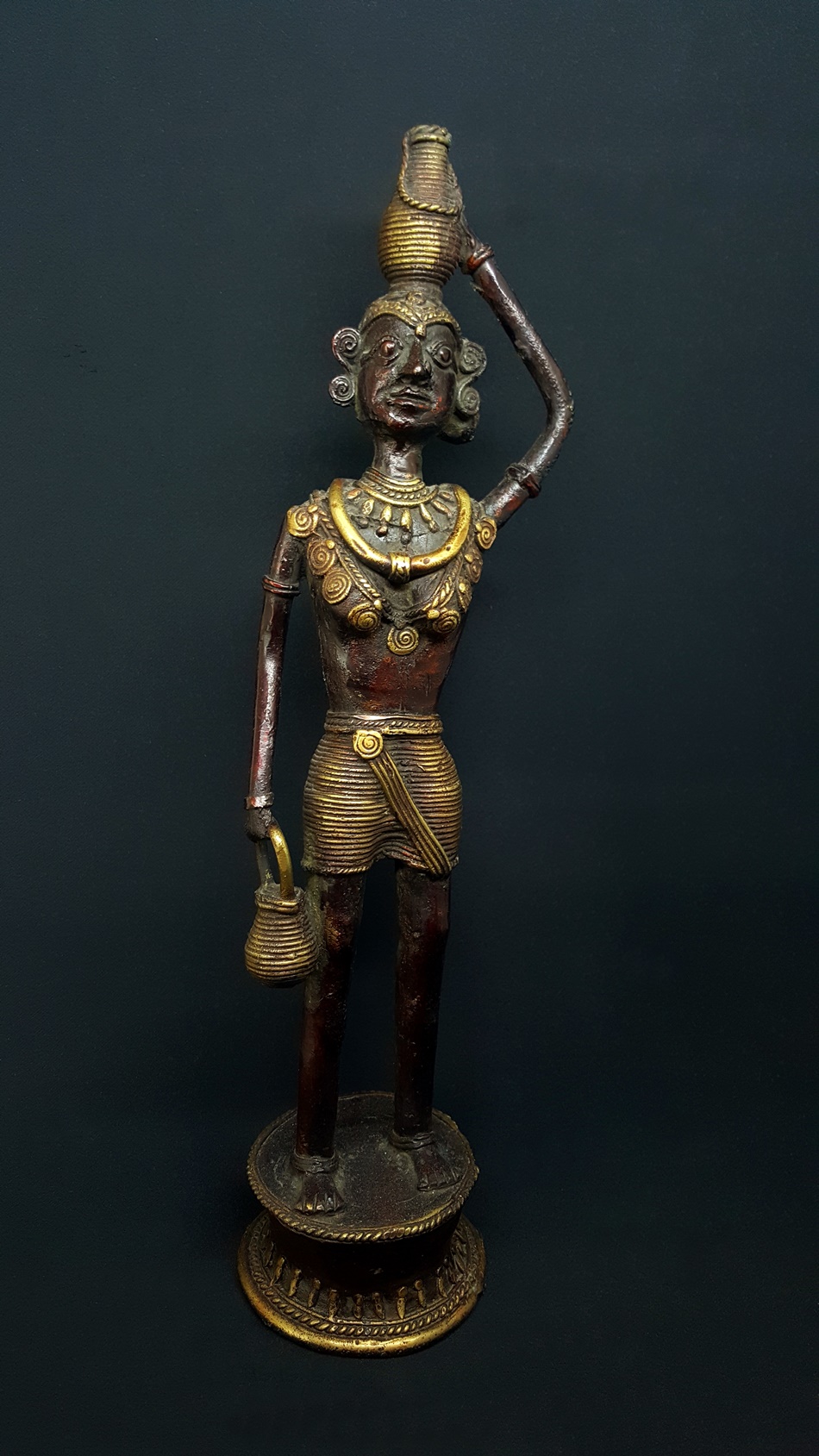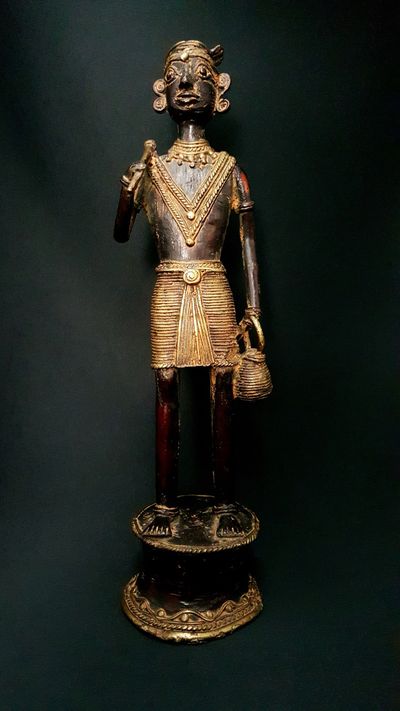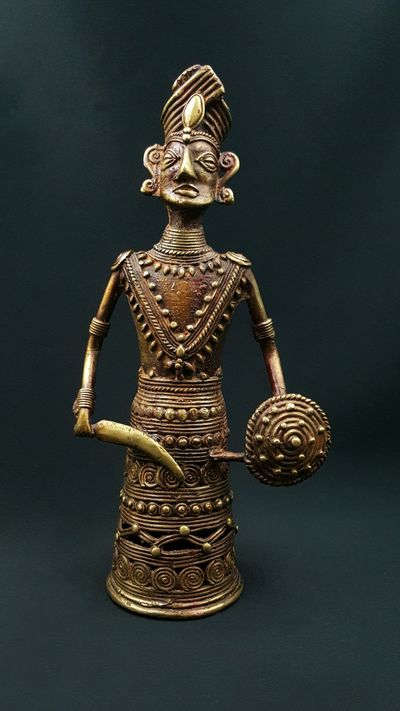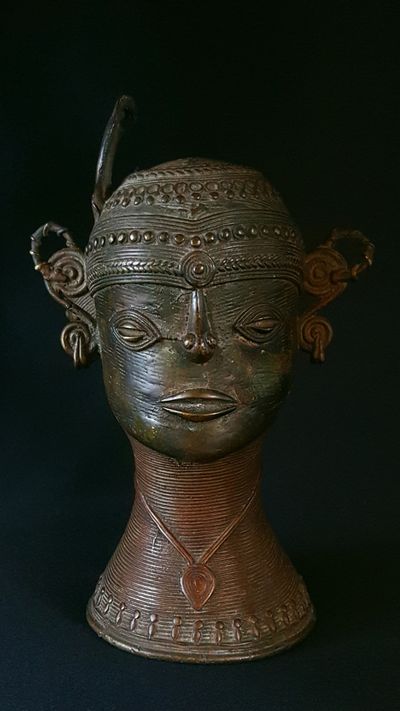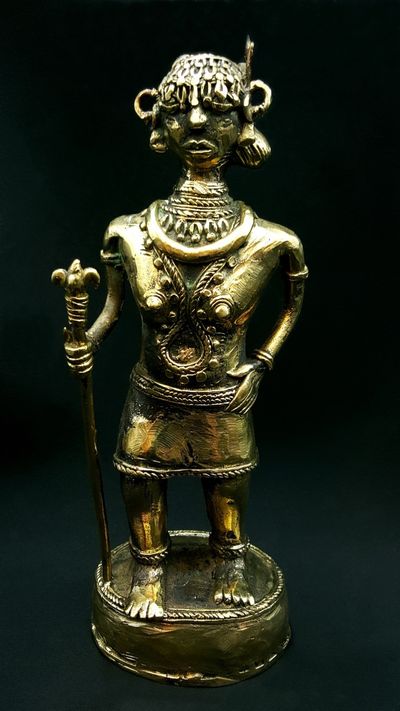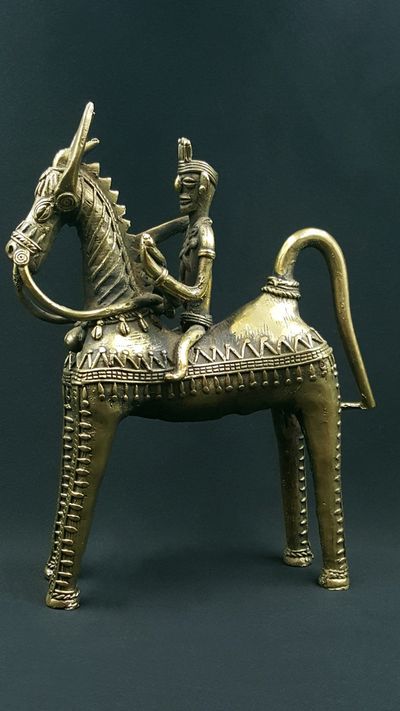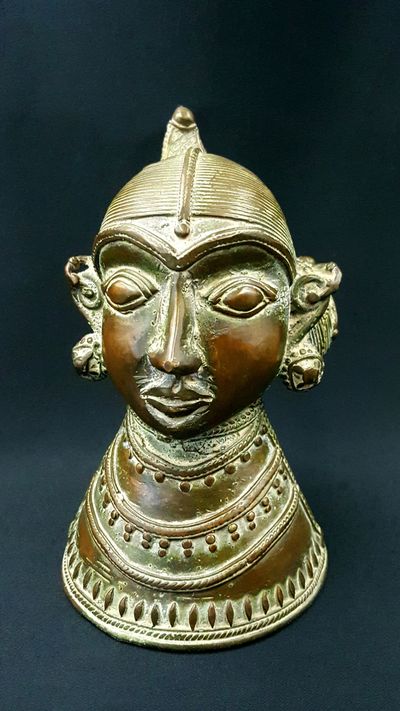Statue Femme assise versant de l’eau
Eau et vie quotidienne
€195.00
Dans cette statue de l’art Bastar de l’Inde du Sud, il se dégage une impression de tranquillité, un espace hors du temps, rythmé par la nature et le travail. En savoir plus...
Hauteur : 31,7 cm
Poids : 1,510 Kg
Art tribal
Technique de la cire perdue - Alliage cuivreux
Origine : Chattisgarh - Inde
Livraison gratuite UE, Norvège et Suisse
Description
Les Bastars
Le Bastar est un district de l'Inde du Sud dans l'État de Chattisgarh, il fût un royaume indépendant du 14ème siècle jusqu'à son intégration à l'Inde en 1948.
La population tribale représente 70% de la population du district ,de Bastar: les principales tribus sont les Gonds - les Abhuj Maria et les Bhatras. La plupart ont gardé leur tradition (art culinaire, vestimentaire, fêtes-) et leur religion animiste.
Les tribus vivent encore principalement de l'agriculture et des ressources tirées de la forêt (chasse, plantes médicinales, bois...).
Certaines tribus se consacrent à la réalisation de statues en laiton depuis plus de 4000 ans. Cet art, que l'on retrouve aussi dans les États du Madhya Pradesh, de l'Odisha, dans l'Ouest Bengal, du Bihar... est appelé Dokra.
L'art Dokra : un savoir millénaire dans la fabrication de statues
Cet art tribal Indien artisanal n'a pas changé depuis des millénaires (+ de 4000 ans) et la technique utilisée ,est toujours celle de la cire perdue : un modèle grossier en argile est réalisé puis recouvert de cire par l'artiste ,qui va lui donner sa forme définitive avec ses détails. L'ensemble est à nouveau recouvert d'un mélange argileux puis chauffé dans un foyer ouvert où un alliage cuivreux sera coulé. voir Blog
Les objets produits par les artistes Dokra peuvent être de nature ,usuels : coupelle, bougeoir... des instruments de musiques (cuivres), ou bien artistiques tels que des bijoux, des animaux : chevaux, éléphants, tortues..., des statues d'hommes et femmes représentant des scènes de vies quotidiennes et des divinités hindous adoptées par les tribus : Ganesh, Lakshmi...
Posture Ce qui marque au premier abord dans cette sculpture, c'est la disproportion du corps : le buste est immense, donnant une présence forte à cette femme. Les bras semblent sans fin, le regard est lointain. En effet cette femme effectue un geste maintes fois répété : transvaser l'eau de sa Tumba (gourde végétale réalisée à partir d'une courge qui sert à transporter l'eau de la rivière ou du puits jusqu'aux habitations) dans un ustensile de cuisine.
Bijoux L'artiste a choisi la sobriété avec un simple collier, des boucles d'oreilles très discrètes, quelques bracelets. La coiffure en chignon est typique, une coiffe en plume ajoute une touche festive à cette scène de vie quotidienne.
